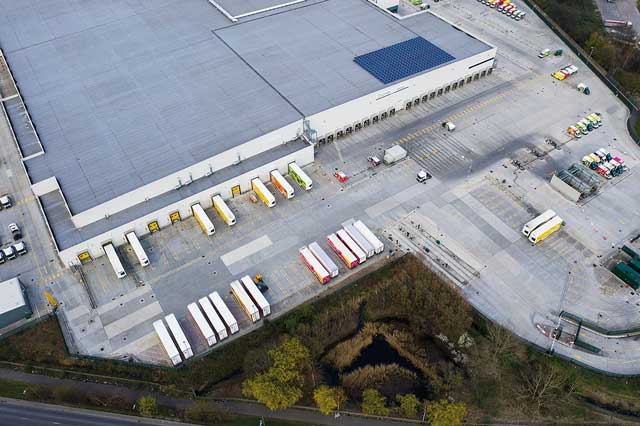Nick Barrett, Editor
nick@maintenanceandengineering.com
@MaintOnLine

Three robots bumped into each other in a fulfilment centre – it might sound like the start of a joke, but it isn’t – causing a Åí110 million fire at what is held to be one of the UK’s most sophisticated and largest automated warehouses. The fire at the Erith, Kent, fulfilment centre operated in joint venture by Marks & Spencer and Ocado, took 100 firefighters with five fire engines some 14 hours to get under control. The incident in July took the facility, that can process some 150,000 orders a week for home deliveries, out of action for the best part of a week.
Ocado’s ‘Hive’ system is a highly impressive operation normally, with over 1,000 robots whizzing around a grid, stopping to pick up crates of food that are delivered to areas where human packers assemble items for delivery to people’s homes. Technology to replace human involvement in the packing activities is being developed.
Things usually run extremely well apparently, but a similar fire destroyed Ocado’s automated warehouse at Andover in 2019 and robot related incidents have been reported at warehouses owned by fashion retailer Asos in the UK and Germany. The latest fire was held in check better than the 2019 incident because of fire attenuation measures that have reportedly been strengthened across fulfilment centres since 2019. Little is being heard about what improvements in robot operation might make a difference, but doubtlessly software and hardware specialists in the field are hard at work and artificial intelligence modified algorithms will provide solutions.

All new technologies or new applications of established technology suffer teething troubles and the use of robots is no exception. But these incidents can have an important knock on effect on investor confidence. Venture capitalists and other investors have poured millions of pounds and dollars into online grocery delivery technology and they will be nervous, and perhaps reluctant to make new funding commitments until they are sure the crashing robots issue is resolved. Expect a renewed focus on maintenance and other technical support activities as fulfilment centre operators and others using robots do all they can to ensure their reputation does not get further tarnished.
The benefits of a benign outlook on a company’s operations from the investment world has also been felt at a diverse range of specialist engineering and other technology companies of the sort that you read about in every issue of M&E. Companies like Spirax Sarco, Halma, Renishaw and Rotork typify the sort of specialist engineers that have become stock market favourites recently. Spirax Sarco’s share price for example is up about 75% since the start of the Covid-19 pandemic, despite having grown very strongly for three years prior to that.
Companies recognised as technological leaders have always enjoyed a premium over mainstream rivals, but it has grown to around 50% from the traditional 10% to 20%. Stockmarket contrarians are already calling time on the boom as share valuations are looking a bit stretched, and against that background incidents calling into question the safety of robotics could be enough to sway sentiment.
…but here comes the punchline
A strong manufacturing sector means a strong focus on maintenance and asset management, hence the interest in the above matters from this magazine. We will bring news of improved robots and anything else that helps make manufacturing or processing industries work better whenever we can.
These leading specialists may have been riding a wave of long structural drivers in their key markets, but the outlook is now clouded by recent news that China aims to develop 10,000 ‘little giants’ targeting the sort of export markets that the above mentioned specialists have been so successful in.
China wants to plug gaps that it sees in its advanced manufacturing capabilities so will focus more on building homegrown ‘hidden champions’ – small and medium-sized enterprises (SMEs) in niche advanced manufacturing sectors. China aims to have these little giants up and running by 2025, part of a new policy emphasis in the14th Five Year Plan period of 2021-2025.
Along with that they aim to have 1,000 enterprises that will be champions in single industries. Other leading companies will form groups to cooperate to become globally competitive leaders in their fields.
Six government ministries have issued guidelines to underpin all of this, in what sounds like a fairly robust industrial strategy, a comprehensive blueprint for an industrial future and a roadmap of how to get there. Which, as Make UK has pointed out, is the very thing that the UK is now moving away from. It will be interesting to see which approach fares best.

